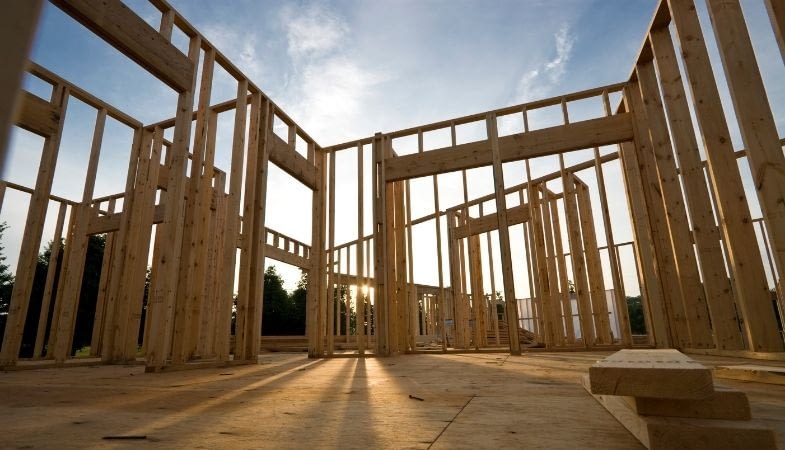
Over the last several months, one of the biggest economic headlines had been the price of lumber. It has been a boom-and-bust tale for a critical material in the home-building process – and a costly factor for homeowners and buyers.
This past spring, the cost of basic lumber skyrocketed to $1,670.50 per thousand board feet on a closing basis, six times higher than the pandemic low in April 2020. Typically, home builders purchase two-by-fours in bulk, so a thousand board feet cost about $550 before the coronavirus pandemic. Due to soaring simultaneous global demand, wildfires in Western Canada and historically low supply, the short-run dynamics supported surging prices, leading businesses to pass the costs onto consumers.
What a difference a few months can make. The building commodity is now down approximately one-quarter year-to-date. Lumber prices are moderating, and market analysts think that more weakness is on the horizon thanks to a few factors: China is releasing its inventory into global markets, there is declining industrial output from many of the country’s largest mills, and the housing industry has accumulated stockpiles due to stimulus fiscal efforts of the U.S. and Canadian governments. This opinion is shared by the Bank of Montreal (BMO), which prognosticates that lumber prices will continue to slide heading into the new year.
Does this mean that broader inflation, something that has impacted Canadian households nationwide, will ease in the face of cooling demand and prices? Brad McMillan, the CIO at Commonwealth Financial Network, told CNBC: “This drop suggests that the cause of that inflation – the mismatch of supply and demand – will not last forever. As suppliers across industries get their act together, those shortages will fade, along with the inflation. That looks to be happening for lumber now and will happen for other inputs later.”
So, now that lumber prices are normalizing, what does this mean for the Canadian real estate market?
Lumber Prices Drop! What This Means for Canadian Real Estate
At the peak of the temporary lumber boom, it was estimated that the average 2,500-sq.-ft. home would face $30,000 in additional costs for lumber. This led to two critical developments in the Canadian real estate market. The first is that it increased the cost of new-home construction, and raised the price tag for these newly built residential properties. The second factor is that it forced many cost-conscious homeowners to wait for any professional or do-it-yourself renovation project because the materials were too expensive, making the investment of a new deck or upper-floor addition exorbitant.
Today, we have some good news and bad news in regard to the state of lumber prices. The good news is that homeowners and even homebuyers could see some savings. The bad news is that companies are selling their overpriced stock at a loss, prompting retailers to initiate blowout price sales so they can move their merchandise.
“What would have been the ideal situation would be for the price to take twice as long to come back down as it did to go up,” said Joel Seibert, owner of Mountain View Building Materials just outside of Calgary, in an interview with CBC News.
This does not mean the Canadian housing market will avoid rampant price inflation. Although lumber costs have fallen, prices for everything else have soared due to supply chain problems and logistical challenges. For example, it is estimated that the average cost of materials has risen about 10 per cent because of delivery delays. Also, the sector has been experiencing a labour shortage, pushing business owners to raise compensation levels to attract more workers – which adds another layer to the pricing woes.
Some industry observers recommend waiting to commence discretionary building projects until there is relief on the price front.
Meanwhile, others are looking ahead to the fall and winter for the lumber market. There are concerns that lumber prices could be inching higher again, with RBC Dominion Securities noting an uptick in home-centre traffic and retail demand trending higher. Perhaps the correction in lumber has hit bottom, and prices could be back on the rise, albeit at a slower pace compared to earlier this year. Thus, the next few months could be compelling and critical for the housing market, particularly in terms of housing affordability.
Is Cheaper Housing on the Way for the Canadian Housing Market?
Suffice it to say, the message that industry observers have is simple: Do not expect cheaper housing because of lower lumber prices. Whether it is builders offloading their overpriced materials onto customers, or the higher cost for everything else necessary to erect a two-floor, three-bedroom house in the Greater Toronto Area (GTA) or Atlantic Canada, the Canadian housing market will likely maintain its elevated valuations until there is respite in other vital areas, including more supply.
Sources:
Original Source Credit: RE/MAX Canada Online Blog


